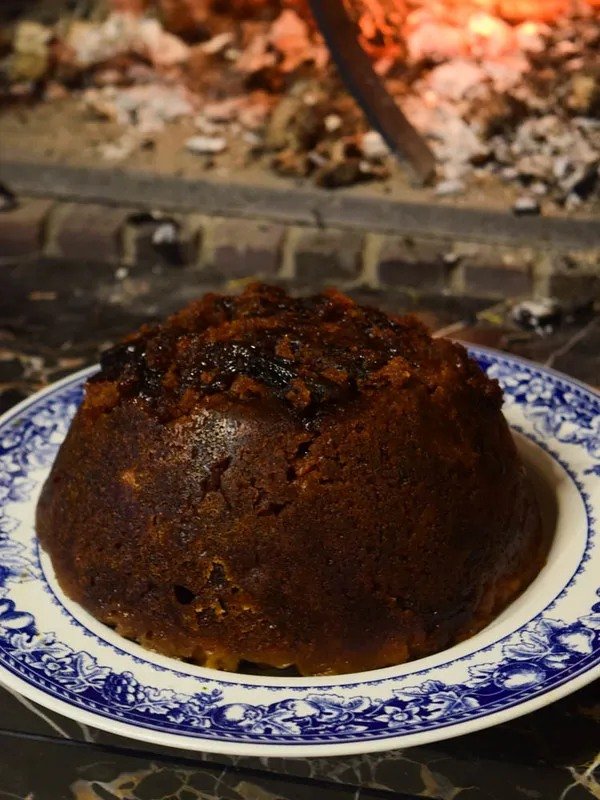When it comes to comfort food, few things capture the spirit of British cuisine better than the humble pudding. From rich, steamed desserts to baked sponge creations, puddings are more than just sweet treats—they’re a nostalgic taste of history, family gatherings, and Sunday dinners. In Britain, the word “pudding” can refer to both savory and sweet dishes, but today we’ll focus on the classic sweet puddings that have graced dining tables for centuries. With their warm, indulgent flavors and simple ingredients, homemade British puddings are the perfect way to bring a touch of tradition to your kitchen.
A Brief History of British Puddings
Traditional puddings date back to medieval England, where they began as savory, suet-based dishes cooked in animal intestines or cloth. Over time, as sugar and dried fruits became more accessible, sweet versions developed. By the Victorian era, steamed and baked puddings such as Spotted Dick, Treacle Sponge, and Sticky Toffee Pudding had become household favorites. These puddings were usually steamed for hours, resulting in a moist, dense, and deeply flavorful dessert. Today, the tradition continues, though modern cooks often adapt recipes to be quicker and easier without losing authenticity.
Classic British Pudding Recipe (Steamed Sponge with Jam)
This recipe gives you the essence of a traditional British pudding. Light yet rich, it combines the soft texture of a steamed sponge with the sweetness of jam, all topped off with creamy custard.
Ingredients (Serves 6)
-
150g (5 oz) unsalted butter, softened
-
150g (5 oz) caster sugar
-
3 large eggs
-
150g (5 oz) self-raising flour
-
1 tsp baking powder
-
2 tbsp milk
-
4 tbsp raspberry or strawberry jam (or golden syrup for a variation)
-
Custard or cream, for serving
Equipment Needed
-
A pudding basin (1 liter / 2-pint capacity)
-
Greaseproof paper and foil
-
String for tying the cover
-
Large saucepan or steamer
Method
-
Prepare the Basin
Grease the inside of the pudding basin with butter. Spoon the jam into the base of the basin and spread it evenly. This will become the topping once the pudding is turned out. -
Make the Sponge Batter
In a large mixing bowl, cream together the butter and sugar until pale and fluffy. Beat in the eggs one at a time. Sift in the flour and baking powder, folding gently until combined. Stir in the milk to loosen the batter, ensuring it is smooth and soft. -
Fill the Basin
Spoon the sponge mixture into the prepared basin, being careful not to disturb the jam layer. Smooth the top. -
Cover the Pudding
Cut a piece of greaseproof paper and foil, placing them together with the paper on the inside. Make a pleat in the center to allow the pudding to rise. Place over the basin and tie tightly with string. -
Steam the Pudding
Place the basin into a large saucepan and pour in boiling water until it reaches halfway up the sides of the basin. Cover with a lid and steam gently for about 1 hour 30 minutes, topping up with hot water as needed. Alternatively, use a steamer if available. -
Serve
Carefully remove the basin and let it cool slightly before turning the pudding out onto a plate. The jam will now be on top, creating a glossy, sweet finish. Serve immediately with warm custard or cream.
Variations of Classic British Puddings
The beauty of British puddings lies in their adaptability. Once you’ve mastered the basic sponge-and-jam pudding, you can explore countless variations:
-
Treacle Sponge Pudding – Replace the jam with golden syrup for a rich, buttery sweetness.
-
Spotted Dick – Add currants or raisins to the batter for a fruity twist.
-
Sticky Toffee Pudding – Incorporate dates into the sponge and serve with toffee sauce.
-
Chocolate Steamed Pudding – Mix in cocoa powder or melted chocolate for a decadent treat.
Tips for Perfect British Puddings
-
Keep the steam steady – A gentle simmer ensures even cooking without drying out the sponge.
-
Don’t overfill – Leave room for the sponge to rise inside the basin.
-
Check for doneness – Insert a skewer into the sponge; it should come out clean.
-
Serve warm – These puddings are best enjoyed hot, straight from the steamer, with custard or clotted cream.
Why Make Homemade Puddings?
There’s something deeply satisfying about making a pudding from scratch. Unlike shop-bought desserts, homemade puddings capture that fresh, warm, comforting quality that feels like a hug in a bowl. They also bring people together—steaming a pudding takes patience, which often means gathering family around the table, enjoying the anticipation as the pudding cooks. Plus, they’re wonderfully versatile; you can make them with pantry staples and adapt flavors to the season.
Final Thoughts
Homemade British puddings may be rooted in tradition, but they’re timeless in their appeal. Whether you opt for a simple jam sponge or indulge in a rich sticky toffee variation, these desserts showcase the best of British baking: simple ingredients transformed into something truly comforting. Once you’ve tried steaming your own pudding, you’ll see why these classics remain favorites across generations. So next Sunday, instead of reaching for a packaged dessert, try making a pudding from scratch—you’ll be rewarded with rich flavor, soft texture, and a little taste of history.
